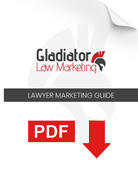
Introduction
A website is more than just an online presence; it’s a 24/7 virtual office that provides a window into your legal practice, offering crucial insights into your services, your expertise, and your approach to solving complex business-related legal issues. In this article, we will explore a comprehensive approach to web design tailored specifically for business lawyers. We’ll dive into the nuances of creating a website that not only stands out but is also optimized for search engines (SEO), ensuring enhanced visibility and, ultimately, the acquisition of new clients.
Your website must effectively communicate your firm’s brand values, your unique selling points, and provide a seamless user experience. It should enable visitors to find the information they need easily and encourage them to take specific actions, such as contacting your firm or scheduling a consultation.
II. Understanding Your Target Audience
The foundation of effective web design for business lawyers is a deep understanding of your target audience. In the context of business law, your audience primarily comprises businesses, entrepreneurs, and corporate clients who are seeking legal counsel for complex commercial matters. To create a website that serves them effectively, you must discern their unique needs, concerns, and aspirations.
Creating content that resonates with this audience is paramount. Providing resources such as informative articles, frequently asked questions (FAQs), and comprehensive guides that address common legal issues faced by businesses, such as contract disputes, intellectual property protection, or business entity formation, is invaluable. These resources not only provide essential information but also establish your authority in the field, nurturing trust among potential clients.
Remember, the ultimate goal is not just to attract visitors to your website but to convert them into clients by demonstrating your comprehensive understanding of their concerns, your ability to provide the legal solutions they need, and your competence in addressing their complex issues.
III. Branding and Visual Design
Branding and visual design play a crucial role in creating a website that resonates with potential business clients. These aspects influence how visitors perceive your law firm and can significantly impact their decision-making process.
Begin this journey by designing a distinctive logo and selecting an appropriate color palette. Your logo serves as the face of your brand, and its uniqueness should reflect your firm’s identity. Opt for colors that convey trust, reliability, and professionalism, as these are the characteristics that businesses seek in a law firm. The imagery you employ, which can include team photos and judicious use of legal symbols, should strike a balance between approachability and authority. A structured layout that ensures clarity and ease of navigation is also fundamental.
IV. Clear and Intuitive Navigation
Clear and intuitive navigation is another critical aspect of web design for business lawyers. It ensures that visitors can easily find the information they need, thereby enhancing their overall user experience and increasing the likelihood of them contacting your firm.
Structuring your website logically is key to achieving this. Key sections such as “About Us,” “Services,” “Testimonials,” “Resources,” and “Contact” should be clearly marked and easy to find. These sections provide essential information about your firm and its services, build credibility through client testimonials, offer valuable resources, and provide a way for potential clients to get in touch.
Using descriptive terms for navigation labels is another essential element for user-friendly web design. Instead of vague labels like “Services” or “Info,” use more specific terms like “Corporate Law Services” or “Business Contract Law Resources.” Not only does this improve usability, but it also contributes to SEO since these terms are likely to be used by people searching for your services.
Finally, implementing a search bar can significantly improve user experience, especially on larger websites with extensive content. This feature allows visitors to quickly find specific information without having to navigate through multiple pages or sections.
A strong brand identity and intuitive navigation structure are foundational for web design in the context of business law. These elements not only improve user experience but also reinforce your firm’s credibility, ultimately leading to higher conversion rates.
V. Search Engine Optimization (SEO)
Search Engine Optimization (SEO) is a critical component of web design for business lawyers. SEO involves a set of techniques aimed at improving your website’s visibility on search engines like Google, ultimately increasing the likelihood of attracting potential clients.
One crucial aspect of SEO is conducting keyword research. Keywords are the terms and phrases that people type into search engines when they are looking for services like yours. Tools such as Google Keyword Planner or SEMRush can help you identify relevant keywords with high search volume and low competition. For a business law firm, these keywords might include phrases like “corporate lawyer in [your location]” or “business contract attorney near me.”
Once you’ve identified your target keywords, it’s time to optimize your content. This means incorporating those keywords naturally into your website text, including page titles, headings, and metadata. Metadata refers to the title tags and meta descriptions that appear in search results. These should be concise, compelling, and include your target keywords where appropriate.
Improving your website’s loading speed is another critical SEO task. Slow-loading websites not only frustrate users but also rank lower in search results. You can enhance your site’s speed by optimizing image sizes, minimizing JavaScript and CSS files, and using a reliable hosting provider.
Obtaining backlinks, which are links from other websites to yours, can also boost your SEO. Search engines view backlinks as a vote of confidence, which can improve your ranking. You can earn backlinks through guest blogging, partnerships with other businesses, or by creating valuable, shareable content.
Remember that SEO is an ongoing process. Search engine algorithms and trends evolve, so you’ll need to monitor your website’s performance and make adjustments as needed.
VI. Highlight Services and Practice Areas
Effectively showcasing your services and practice areas is essential for business lawyers. It’s not merely about listing your services but demonstrating your expertise and differentiating your firm from the competition.
Start by creating dedicated pages for each area of business law you handle, such as mergers and acquisitions, intellectual property, contract law, and more. These pages should offer detailed, easy-to-understand information about each topic, helping potential clients understand what’s involved and how you can help.
Avoid using legal jargon whenever possible. While it’s important to sound professional, remember that your audience likely doesn’t have a legal background. Use clear, concise language that anyone can understand.
Consider providing examples or case studies. This can be an effective way to illustrate your expertise and show how you’ve helped clients in similar situations. Be sure to anonymize any personal information to protect your clients’ privacy.
Finally, differentiate your firm by emphasizing your unique qualities. Perhaps you offer personalized service, have decades of experience, or use a collaborative approach to business law. Whatever sets you apart, make sure it’s clear on your website.
Your website is often the first impression potential clients have of your firm. By implementing effective SEO practices and highlighting your services and areas of practice effectively, you can attract more visitors and convert them into clients.
VII. Engaging and Informative Content
Engaging and informative content provides value to your visitors, demonstrates your expertise, and can help convert visitors into clients.
Establishing a blog section is an excellent way to provide such content. Blog posts allow you to delve deeper into topics related to your practice areas, answering common questions and addressing concerns that potential clients may have. They also provide an opportunity for keyword optimization, which can improve your website’s SEO.
However, it’s not enough to simply write about legal topics. Your content should offer practical advice and valuable insights that your audience can use. For example, you could write a post on “10 Key Legal Considerations for Startups” or “How to Protect Your Intellectual Property.” These types of posts offer actionable advice, making them valuable to readers and more likely to be shared.
To ensure your content is easy to read and digest, make it scannable. Break up text with subheadings, bullet points, and short paragraphs. This allows readers to quickly skim through and find the information they need.
Additionally, consider creating downloadable resources such as e-books or checklists. These can provide in-depth information on specific topics and serve as a lead capture tool. In exchange for the resource, visitors provide their email address, allowing you to build a list of potential leads to follow up with.
VIII. Mobile-Friendly Design
In an era where the majority of internet users access the web via mobile devices, having a mobile-friendly design is essential. A website that doesn’t perform well on mobile devices can frustrate users and cause them to leave, potentially costing you potential clients.
Responsive design must be a priority. This means your website automatically adjusts its layout and features to fit different screen sizes, from smartphones to tablets to desktop monitors.
In addition to responsive design, ensure your website loads quickly on mobile devices. Slow loading times can lead to high bounce rates and lower rankings on search engine results pages. Optimize images, use mobile-friendly plugins, and consider implementing Accelerated Mobile Pages (AMP) to improve loading speed.
Readability and easy navigation are also crucial for mobile users. Use larger font sizes, clear buttons, and a simple menu structure to make your website easy to use on smaller screens.
Finally, consider employing mobile-specific strategies to cater to on-the-go users. For example, click-to-call buttons allow mobile users to call your office with a single tap, while location-based SEO can help local users find your firm more easily.
Engaging content and a mobile-friendly design are vital elements of web design for business lawyers. By providing valuable content and ensuring your website performs well on all devices, you can enhance user experience, improve your search engine rankings, and increase your chances of attracting new clients.
IX. Call-to-Action (CTA) Buttons and Contact Information
Call-to-action (CTA) buttons and easily accessible contact information are crucial elements of effective web design for business lawyers. They guide visitors toward taking desired actions, such as scheduling a consultation or reaching out for more information.
Strategically placed CTA buttons throughout your website can significantly increase conversions. These buttons should be clear, concise, and instructive. Phrases like “Schedule a Consultation,” “Contact Us Now,” or “Download Our Free Guide” directly tell visitors what action they should take next.
In addition to CTAs, your contact information should be readily available on every page of your website. This could include your phone number, email address, and physical location. Having this information easily accessible reduces friction for potential clients trying to reach you.
Offering free consultations is another strategy to consider. This acts as a unique value proposition, setting you apart from other firms. By offering a risk-free way for potential clients to learn more about how you can help them, you’re likely to attract more inquiries.
Heatmaps and User Behavior Analysis
To optimize your CTA buttons, it’s important to understand how users interact with your website. Tools like heatmaps and user behavior analysis can provide valuable insights into these interactions.
Heatmaps visually represent users’ behavior on your site, showing where they click, how far they scroll, and what areas they spend the most time on. By analyzing heatmaps, you can identify the areas of your website that receive the most attention and those that are often ignored. This information can help you make informed decisions about where to place your CTAs for maximum visibility and impact.
User behavior analysis involves tracking user interactions, such as how long they stay on a page, which links they click, and at what point they exit your site. This data can help you identify patterns and understand the decision-making process of your website visitors. For example, if you notice that visitors tend to exit your site after viewing an attorney’s profile, you can strategically place a CTA at the end of that page to capture their attention before they leave.
By combining insights from heatmaps and user behavior analysis, you can fine-tune the placement and wording of your CTAs to align with your visitors’ preferences and behaviors. This data-driven approach can significantly improve the effectiveness of your website’s CTAs.
X. Testimonials and Case Studies
Testimonials and case studies are powerful tools for building trust and demonstrating expertise on your law firm’s website. They provide social proof, showing potential clients that others have had positive experiences with your firm.
Showcasing feedback from satisfied clients can significantly enhance your credibility. These testimonials should be genuine and highlight the specific ways in which you’ve helped your clients. Remember to obtain permission from clients before using their testimonials.
Detailed case studies can also be used to demonstrate your expertise and the results you’ve achieved for clients. These should provide an overview of the client’s situation, explain the approach you took, and highlight the outcome. Like testimonials, any case study should respect client confidentiality and privacy.
Consider using various formats for your testimonials. While text-based testimonials are common, video testimonials can be particularly powerful as they provide a more personal and relatable insight into a client’s experience. You could also use logos of recognizable clients or professional associations, if applicable.
Finally, ensure your testimonials and case studies are regularly updated to maintain relevance. Showcasing recent successes and positive feedback can demonstrate that your firm is active and continually delivering high-quality service.
XI. Privacy and Security Considerations
Privacy and security have become paramount concerns, especially for law firms handling sensitive client data. To build trust and maintain your firm’s credibility, it’s essential to address these considerations in your website design.
Start by securing your website with SSL (Secure Sockets Layer) encryption. An SSL certificate encrypts the data transmitted between your website and visitors, ensuring that sensitive information remains confidential. When a website is SSL-secured, it displays a padlock icon in the browser’s address bar, signaling to visitors that their data is protected.
Protecting the data you collect from website visitors is also crucial. If your website includes contact forms or collects email addresses, ensure that the data is encrypted and stored securely. Regularly update your website’s content management system (CMS) and plugins to address any security vulnerabilities. Collaborate with reputable hosting providers that prioritize security and consider implementing a Web Application Firewall (WAF) to protect your site from cyber threats.
Additionally, display trust badges or seals on your website to signal your commitment to privacy and security. These badges can include certifications related to data protection and privacy compliance. Transparency is essential, so make sure to provide comprehensive information about your privacy policy and how you handle user data. This not only enhances your credibility but also helps your firm comply with legal regulations like the General Data Protection Regulation (GDPR) or the California Consumer Privacy Act (CCPA), depending on your jurisdiction.
XII. Regular Updates and Maintenance
Creating an effective website is not a one-time effort; it requires ongoing updates and maintenance to keep it relevant, user-friendly, and secure. Regular updates are essential to ensure your website remains a valuable resource for both current and potential clients.
Content Updates:
Fresh, informative content is a cornerstone of web design for business lawyers. Regularly publish new blog posts, articles, or resources to keep visitors engaged and informed. These updates not only enhance your SEO but also establish your firm as a credible and authoritative source of legal information.
Practice Areas:
Ensure that the practice areas on your website are aligned with current legal regulations and your firm’s areas of expertise. As laws change, your website should reflect these updates to provide accurate information to potential clients.
Case Results:
Highlight your recent successes and positive outcomes by updating your case results. This demonstrates your firm’s continued excellence and reinforces your expertise.
Technical Maintenance:
Conduct routine maintenance checks to identify and resolve any technical issues. Broken links, form errors, or navigation problems can deter visitors and harm your search engine rankings.
Mobile Optimization:
Keep your website optimized for mobile devices. As new technologies and devices emerge, adapt your site to ensure it remains mobile-friendly.
Security Updates:
Regularly update your website’s security features, plugins, and CMS to protect against emerging threats and vulnerabilities.
Analytics and Optimization:
Continually analyze website performance using analytics tools. Identify areas that may require improvement and make data-driven decisions to optimize your site.
Your website is a vital tool for attracting and engaging potential business clients. Regular updates and maintenance are key to maintaining its relevance and effectiveness. With a responsive, secure, and informative website, you can drive client growth and establish your firm as a trusted authority in the field of business law.
XIII. Conclusion
A meticulously designed, user-friendly, and SEO-optimized website is an essential tool for attracting and engaging potential business clients. By implementing the strategies discussed in this approach, you can create a standout website that effectively communicates your expertise and attracts valuable clients.
Your website serves as the initial touchpoint for potential clients, making effective SEO practices and comprehensive coverage of services imperative for attracting and retaining visitors. Engaging content, mobile-friendly design, and persuasive CTAs enhance user experience and encourage visitors to take action. Regular updates and maintenance ensure your website remains a valuable resource, reflecting your commitment to excellence and security.
As the landscape of business law evolves and competition intensifies, your website becomes a powerful tool to differentiate your firm and attract new clients. However, creating an effective website requires time, effort, and a strategic plan. It’s crucial to analyze your business goals, target audience, and competition to ensure your website resonates with potential clients and accurately showcases your brand identity and values.
Designing a website for your law firm is a significant investment, offering substantial returns in today’s digital age. A professional, engaging website can attract high-quality leads, differentiate your firm from competitors, and increase conversions and client acquisition.
Explore proven marketing ideas for Business Lawyers.
Need help with a new website for your law firm? Contact the Gladiator Law Marketing team. For over 10 years we have been helping business law firms grow with actionable, data-driven marketing strategies. Our track record speaks for itself, with a remarkable 95% client retention rate. From award-winning websites to high-ROI SEO, PPC and Social Media campaigns, Gladiator Law Marketing can help your law firm stand out in a crowded marketplace. Contact us at 888-683-3212.







